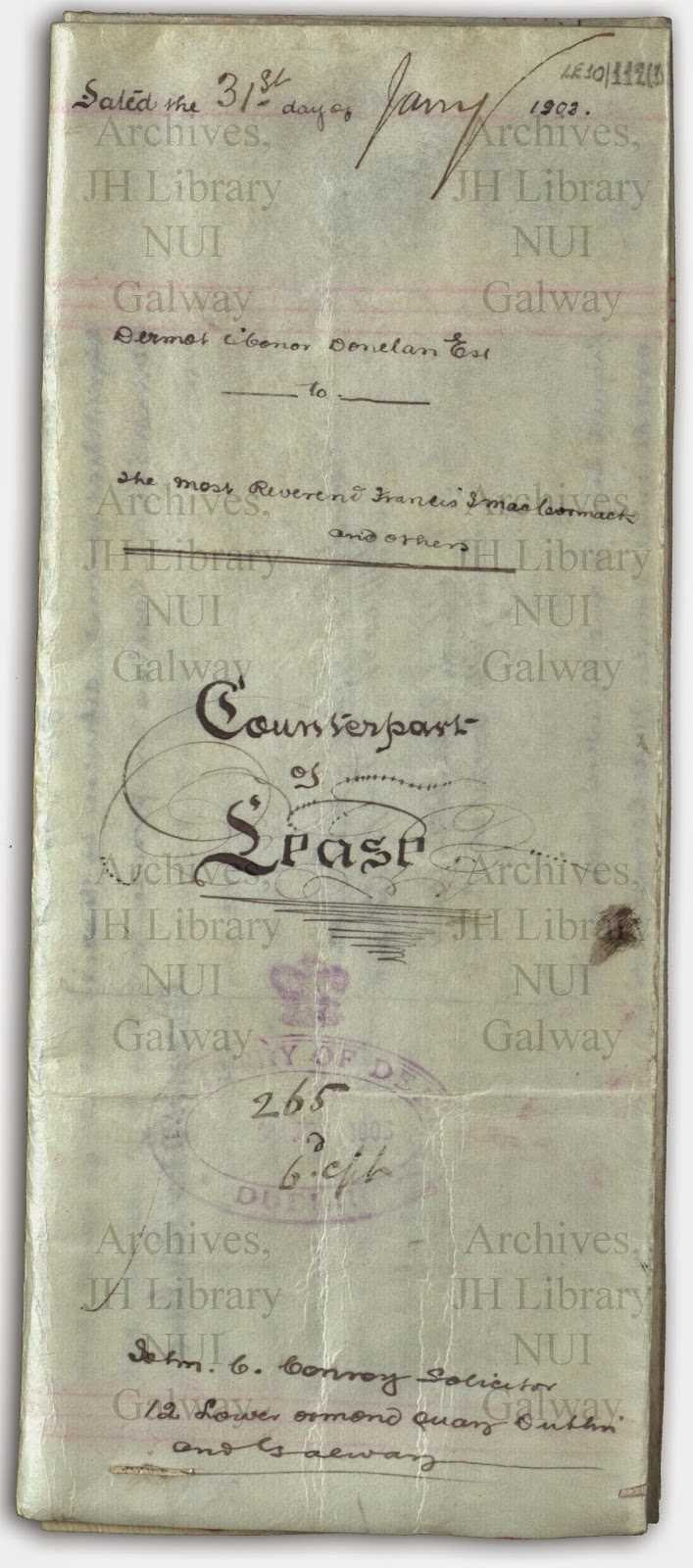 |
| Letter from John O'Connor Donelan to his mother 21 July 1893 |
Land–its ownership, occupancy and use– has been a central motif in Irish history and in the Irish imagination for centuries. Land has been a source of wealth and income, as well as a key marker of social rank and political power. A history marked by confiscation and plantation resulted in the land being a site for conflicting claims and identities in Ireland. Accordingly, primary documentary records relating to Irish landed families and estates provide a rich resource for the investigation of many aspects of Irish history.
The Archives of the Hardiman Library hold a number of landed estate collections relating to major estates and families in the West of Ireland. The O’Connor Donelan collection provides a good example of the value of such records. The papers relate to the O'Connor Donelan family of Sylane, Tuam, County Galway. The papers cover the legal dealings of the family, the management of their various lands, and personal papers relating to various family members. The bulk of the personal material relates to Thomas O'Connor Donelan (1812-1874) and his sons. His eldest son Dermot had an interest in genealogy and forestry, and his other three sons were doctors in Dublin, Leeds and Manila.
 |
| Thomas O'Connor Donelan, c. 3 years old, c. 1870 |
A Galway landowning family, the O’Connor Donelan family papers relate principally to the nineteenth century, though reflecting the activities of both the Donelan and O’Connor families in earlier centuries. The papers document various aspects of the lives and range of interest and responsibilities of the family: the legal aspects of their affairs, the challenges of estate management and the personal concerns (including political activities) and contacts of family members in the nineteenth century. The collection offers the researcher a valuable case-study of a modest Galway landed estate of the nineteenth century.
Also available online from NUI Galway is the Landed Estates web site, www.landedestates.ie, a comprehensive and integrated online resource guide to landed estates and gentry houses in Connacht c.1700-1914.
 |
| Lease for Cuilmore [Peterswell, County Galway]., containing three acres, for use as a priest's residence for 999 years, at £11 per annum. 31 January 1846 |
.jpg)
.jpg)
.jpg)
.jpg)
